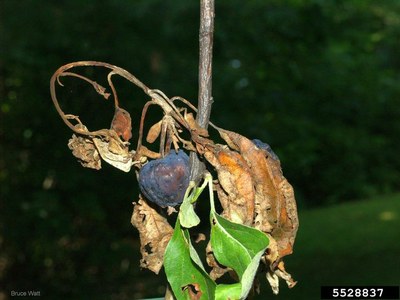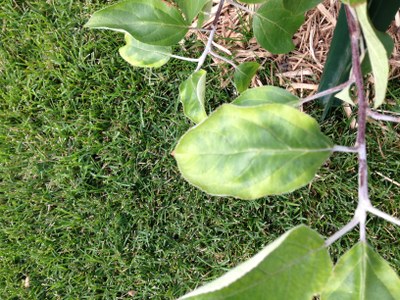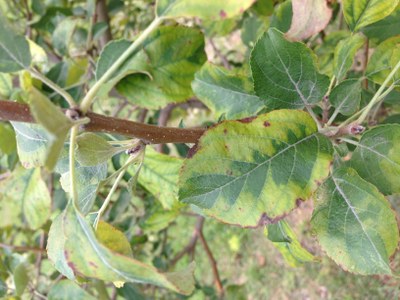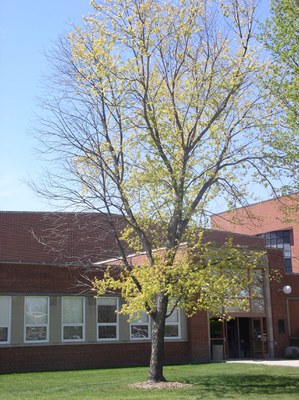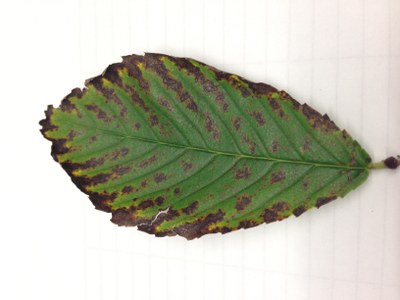Hosts
Freeman maples, silver maple, river birch, Swedish columnar aspen
River birch leaf with interveinal chlorosis (Esther McGinnis, NDSU)
Symptoms
- Leaves turn yellow-green or bright yellow but veins remain green (interveinal chlorosis)
- In severe cases, leaf margins may turn brown and appear scorched
- Symptoms first appear on newest leaves at branch tips
- Over time, twigs and branches may die back from the crown
- Eventually, the tree may die if the iron deficiency persists for years
Branch dieback on silver maple (Joseph Zeleznik, NDSU Extension)
Management and other important facts
- This abiotic disorder is caused by an iron deficiency that is associated with alkaline soils, cool temperatures, and wet soils; these conditions render the normally abundant iron in North Dakota soils as unusable by the plant
- Foliar sprays of chelated iron may provide quick green-up of the foliage but this treatment is temporary and trees do not always respond
- Iron chelate products may be applied to the soil or injected into trees for longer lasting relief
- Broadcasting soil acidifiers such as elemental sulfur or iron sulfate onto the soil surface may lower the soil pH; gradually converting the iron in the soil into a usable form by the plant
- Replace iron-deficient trees with individuals that are better adapted to alkaline soils
Authors: Esther McGinnis and Kasia Kinzer

